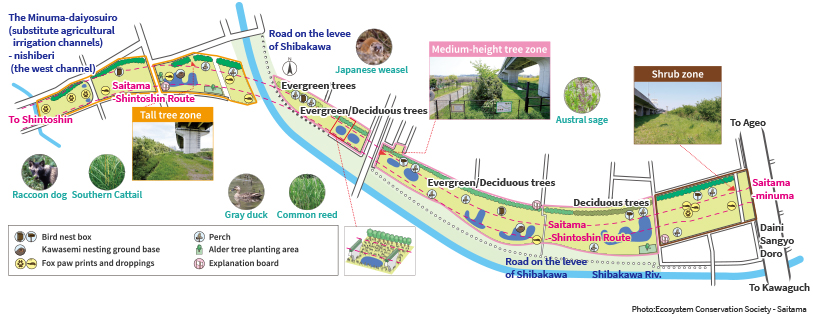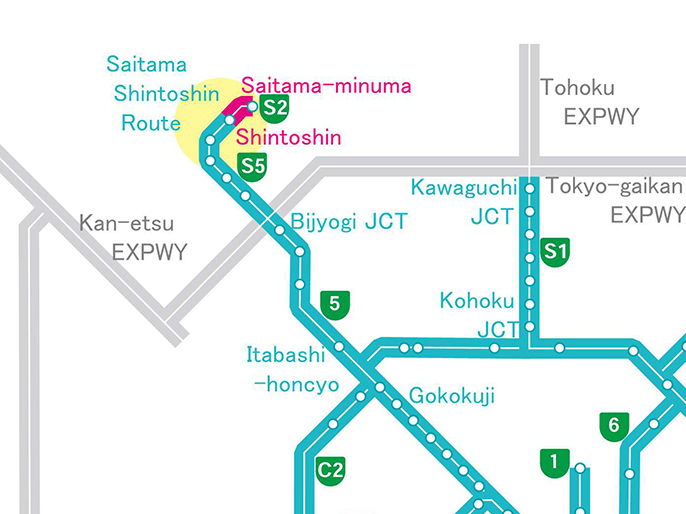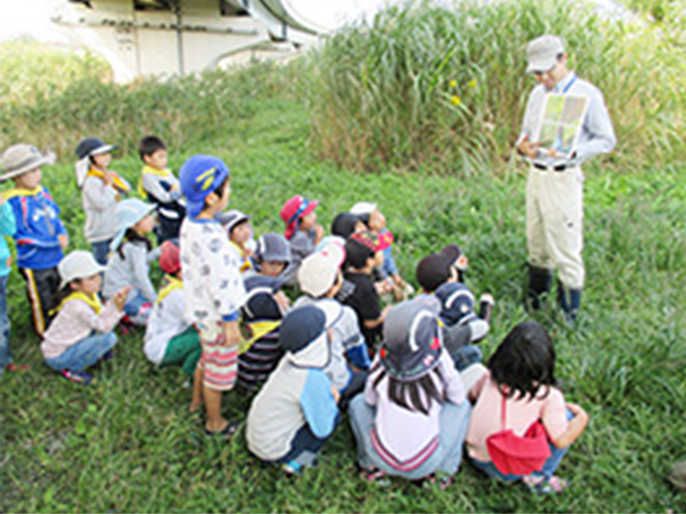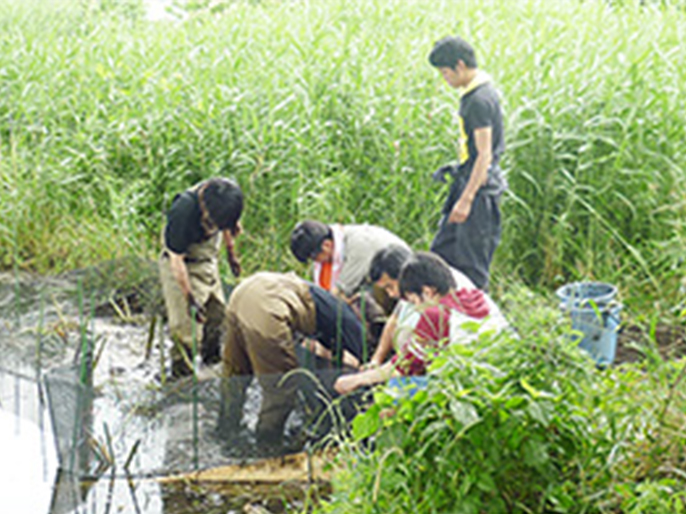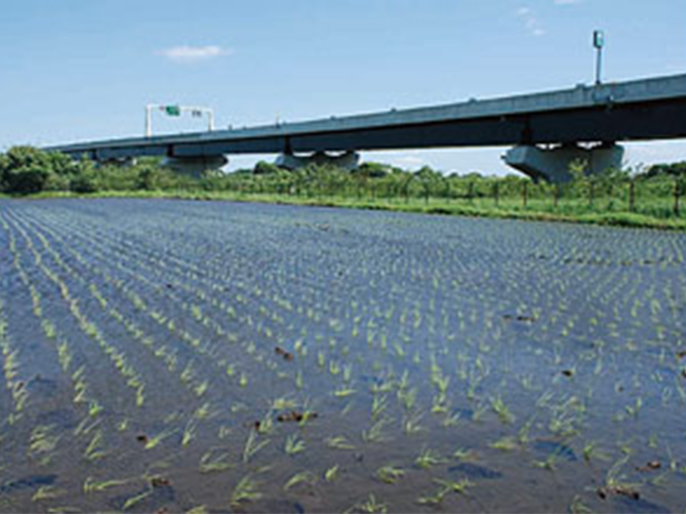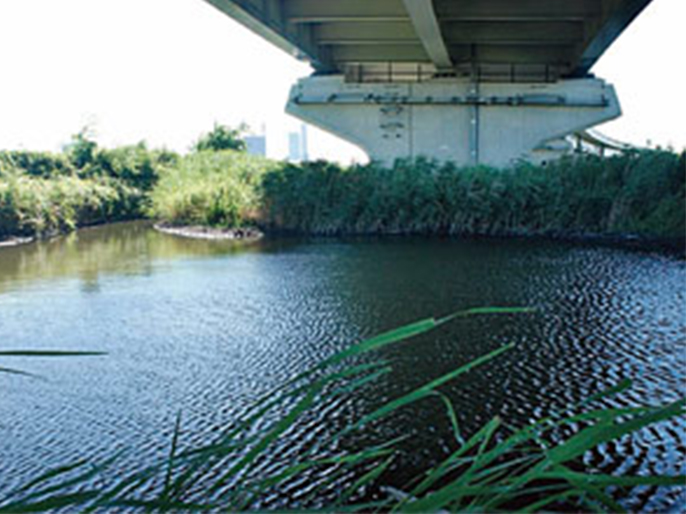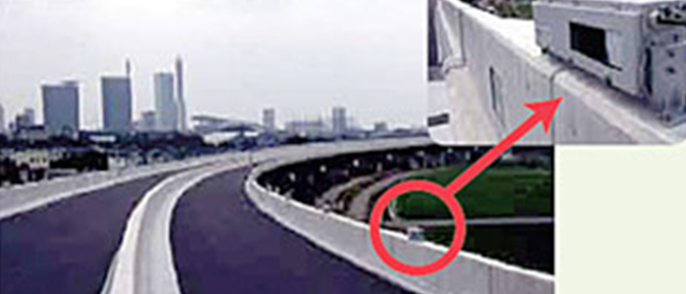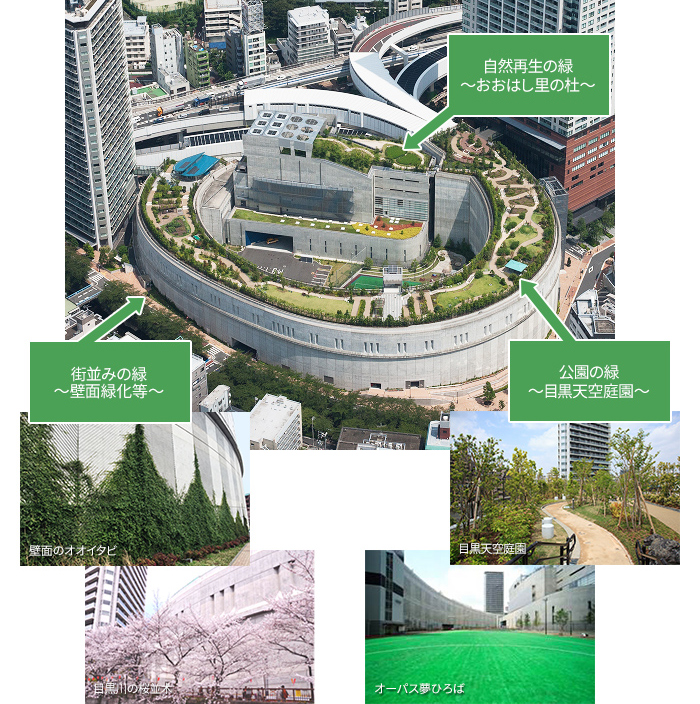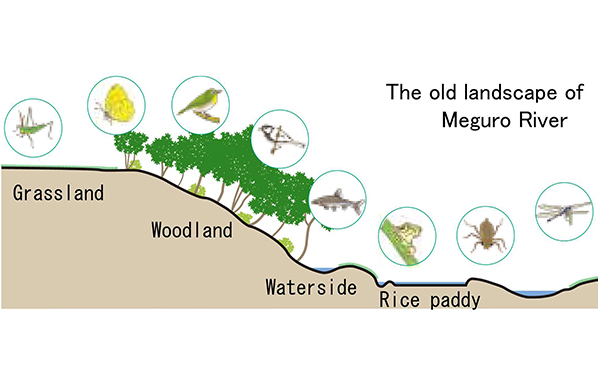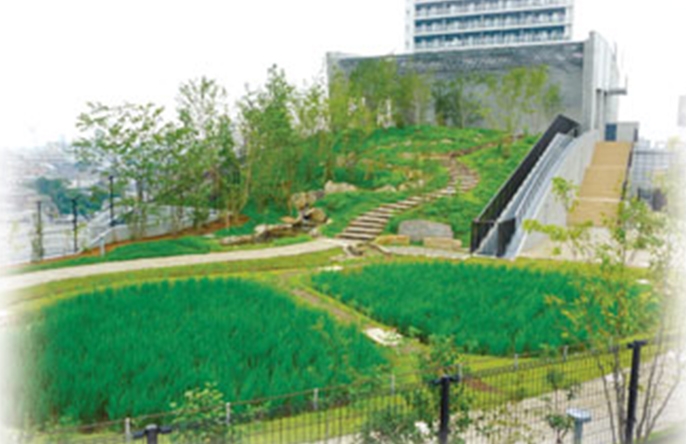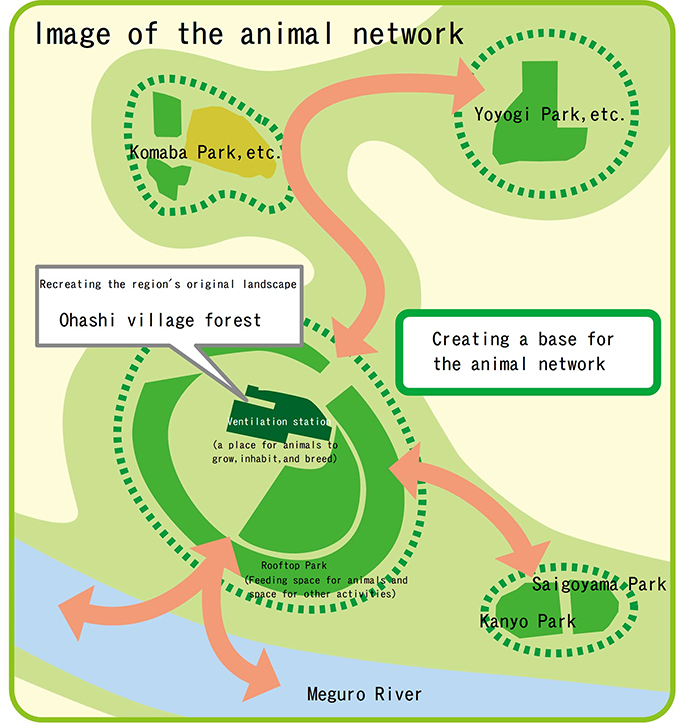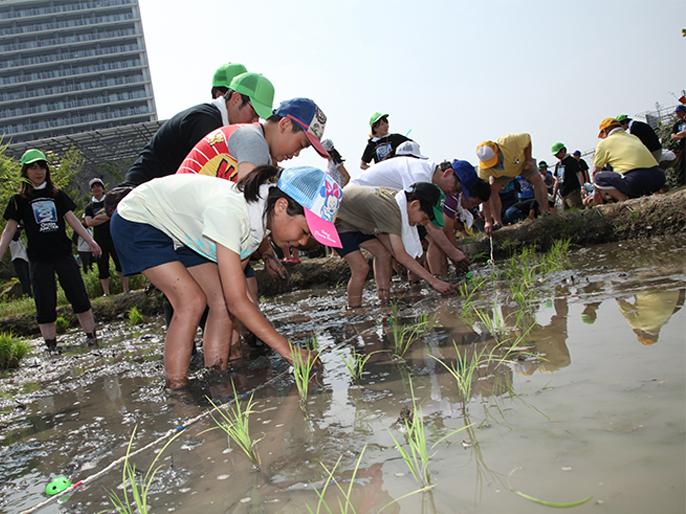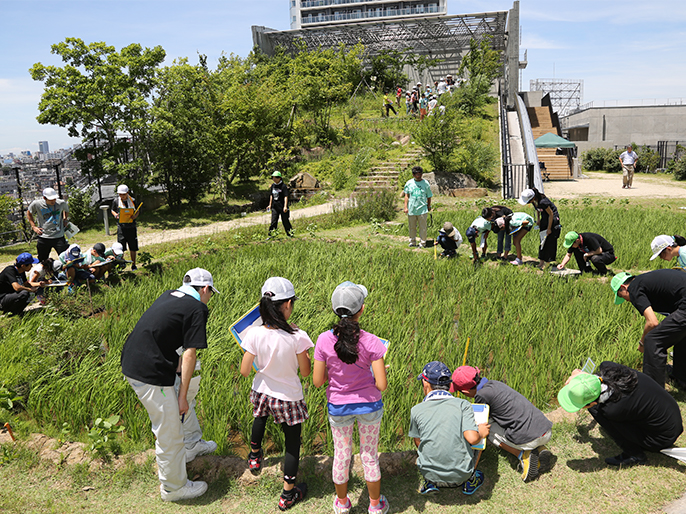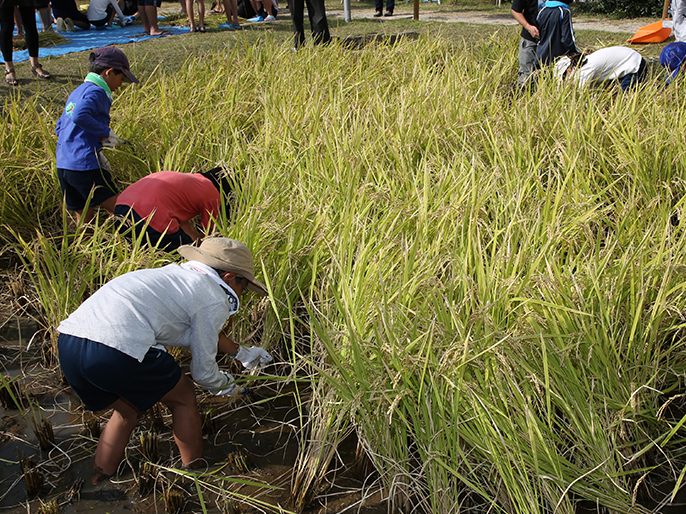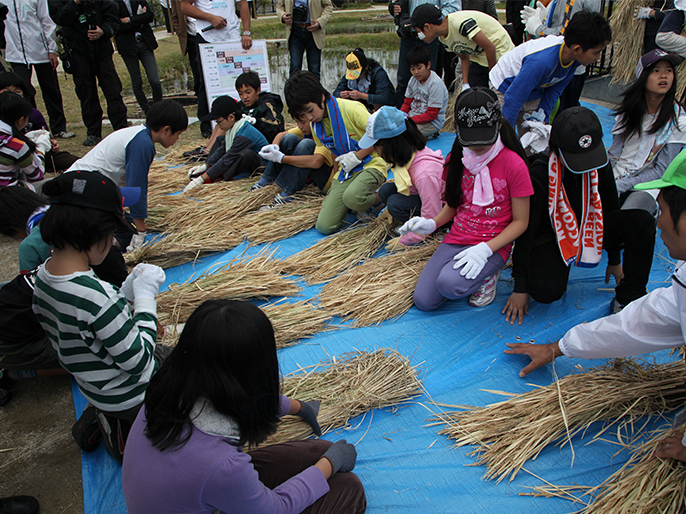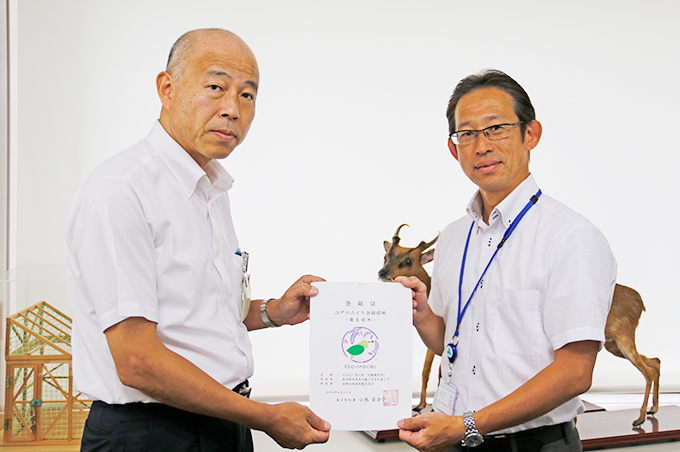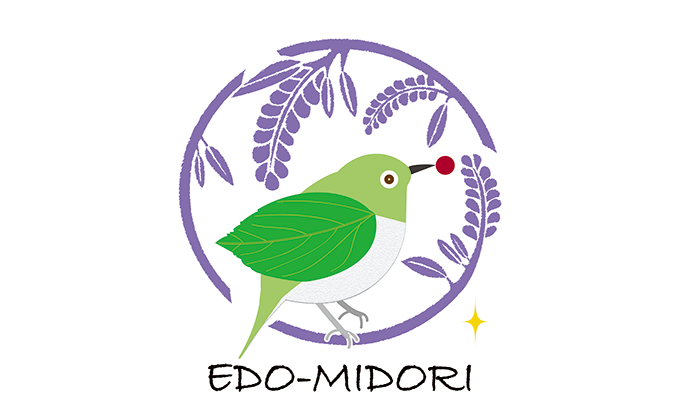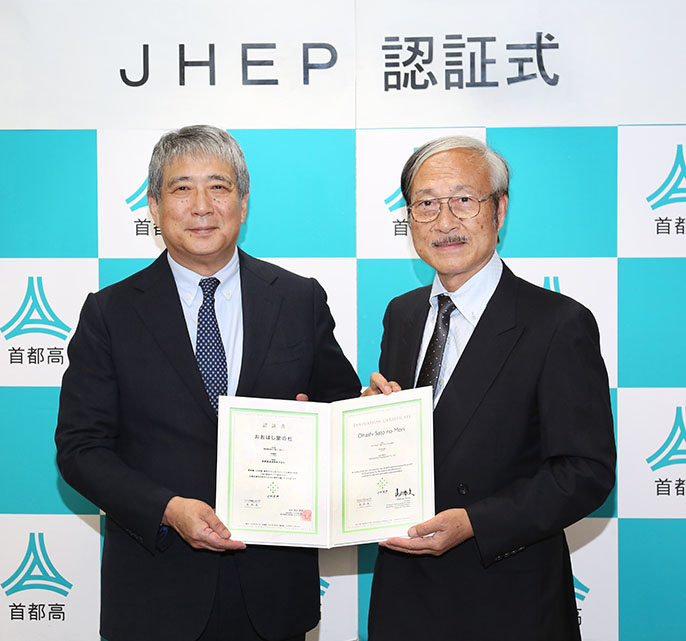Ohashi "Green" Junction
The Ohashi Junction connecting Route 3 Shibuya Line and the Central Circular Route (Yamate Tunnel) is also called "Ohashi "Green" Junction" because it enabled the creation of environmentally friendly roads and towns. Four organizations i.e. the redevelopment project (Tokyo), the park maintenance project (Meguro-ku), the road projects (Metropolitan Expressway Company), and the locals of the area worked in unison to create the Ohashi "town".
"Three greens"
Ohashi "Green" Junction is an active measure against global warming and heat islands with its three greens, namely the "green for nature regeneration", the "green for park", and the "green for townscape" that contribute to biodiversity.
Green for nature regeneration
The naturally restored green area "Ohashi village forest" built on the roof of the Ohashi ventilation station located inside the Ohashi junction was modeled on the original scenery around the Meguro River. Monitoring after completion confirmed the breeding of killifish, etc. brought from local ponds, insects, aquatic organisms, and the arrival of many birds.
Green for park
"Meguro Sky Garden" on the rooftop of Ohashi Junction is a huge loop shaped park run by the Meguro ward with a length of about 400m, a height of 7 to 35m, and an area of about 7,000m². “Opus Yume Hiroba", a multipurpose area of about 3,000m² was built on the inner side of the junction loop.
Green for townscape
We are applying a green cover along the walls of the Ohashi Junction starting at ground level by using the creeping fig (a creeper that climbs directly upwards), an evergreen ivy, taking into account its fit with the surrounding environment. The creeping fig grows slowly at about 30 to 50cm per year, but a stately green cover forms on the Colosseum-like walls as time goes on.



